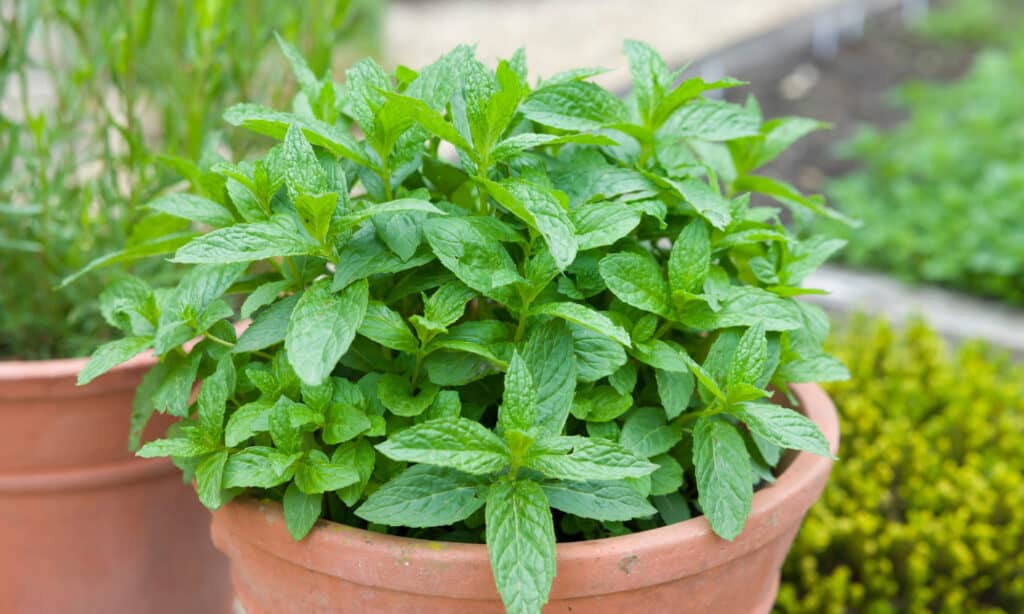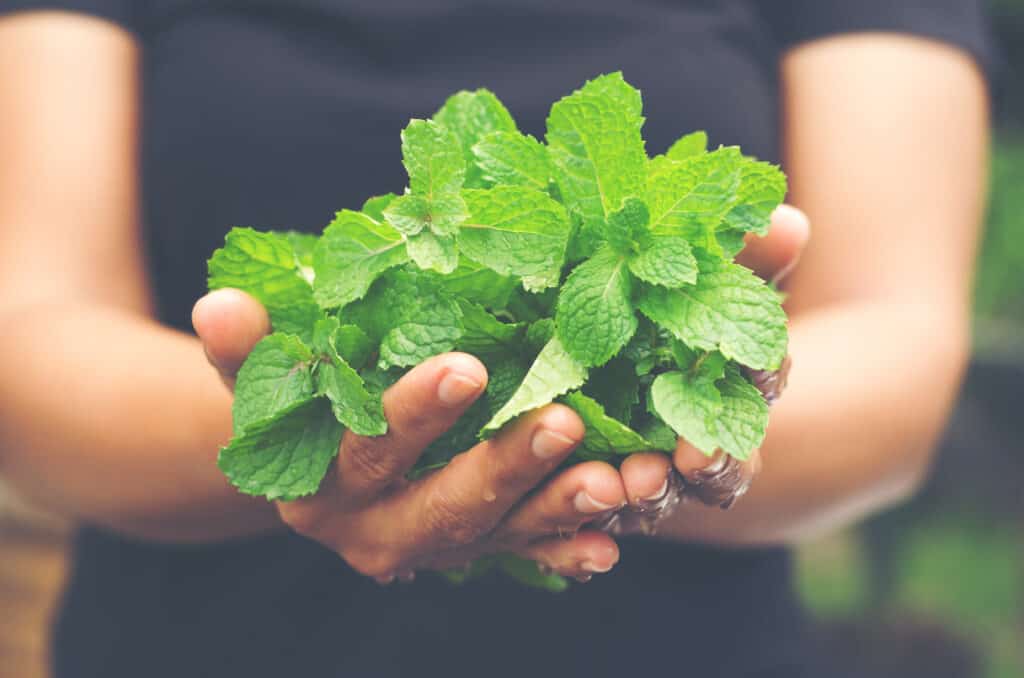With so many different types of herbs, choosing which is suitable to grow in your garden can be challenging. If you’re looking for a sweet, fresh-flavored herb that can go with just about anything, consider mint for your garden this year! Below we go through everything you need to know about growing mint indoors and outdoors.
What is Mint?
Mint, also known as mentha, is part of the Lamiaceae family and the subfamily Nepetoideae. A highly scented aromatic plant native to temperate regions of the Old World, there are several kinds of mint (more than 600 varieties!) primarily used as culinary herbs. The most common variety of mint is spearmint — the main ingredient in several kinds of toothpaste, sweets, and chewing gums. Other varieties that you might be aware of include:
- Peppermint: Used in teas, chewing gums, and even potpourri, peppermint is a very popular variety of mint worldwide.
- Mojito mint: This is the authentic mint for making the rum cocktail known as the mojito.
- Chocolate mint: Despite its name, this type of mint tastes orange-like. It’s used to flavor desserts and drinks.
Mint leaves can be green, purple, blue, grey, and yellow, often with soft downy hairs on their undersides. Usually, mint plants have only their leaves, but in summer, small white flowers can appear atop spikes.
Besides the vast cuisines in which you can find mint included, the plant is also a great garden accent, ground cover, herbal medicine, and air freshener. But since mint can be a vigorous spreader, you must be careful where you plant it. Let’s dive into the ins and outs of growing mint.

Many people grow mint indoors to have fresh leaves throughout the winter.
©Paul Maguire/Shutterstock.com
How to Grow Mint
Many mints grow up to 48 inches tall and are considered invasive because they grow so quickly through their roots. A few things to keep in mind when growing mint:
- Mint prefers wet habitats. But it’s a persistent and tough plant and will grow almost anywhere.
- Most mints like to grow in the sun or in partial shade. If you’re planting a variegated type of mint, these plants may need more protection from direct sun.
- Mints prefer an area similar to stream banks — their native habitat.
- A vigorous perennial, mints do best in light soil with good drainage and rich organic matter.
- Minimal care is needed for mint. Plant it and watch it grow!
Depending on whether you want to grow mint indoors or outdoors, there are a few other steps to follow when growing mint.
Indoor Mint
Many people grow mint indoors to have fresh leaves throughout the winter. It’s recommended to contain your mint in a pot, whether above ground or in the ground. As mentioned, mint is a vigorous grower and fast spreader, and if not contained properly, it will send out its roots and runners and spread all over your garden. Plant your indoor mint in a 10-inch pot with drainage holes. You can then sink this pot into the ground or another larger container of soil.
Water indoor mint plants regularly to keep the soil evenly moist.
Outdoor Mint
When growing mint outdoors, plant 1-2 plants in moist soil about 2 feet apart. It only takes one or two plants to have a lush, thriving mint plant. Again, plant your mint in a pot, separate area, or raised bed to keep it contained — especially outdoors. If you want the mint to be ground cover, you don’t need to separate its roots from the rest of your garden or lawn. Many people use mint as ground cover to help with soil stabilization, as well as prevent erosion and sediment runoff.
Plant mint near cabbage and tomatoes because it’s believed mint helps improve the flavor of members of the nightshade family. For outdoor mint plants, a light mulch is all you need to use to help keep the soil moist and leaves clean.

You can freeze and air-dry your mint leaves in bunches to save them for a later date.
©Cat Act Art/Shutterstock.com
Harvesting Mint
It’s crucial to frequently harvest your mind to keep them at their best. As a quick grower and spreader, you’ll have plentiful mint leaves to gather throughout the growing season. Feel free to harvest mint as soon as it comes up in the spring. You can freeze and air-dry your mint leaves in bunches to save them for a later date. The leaves can survive for a few days in water in your refrigerator if need be.
If you want to dry your mint leaves, cut them right before flowering in the summer.
Mint Plant Pests and How to Handle Them
As with any plant, certain pests come with them. For mint, pests such as spider mites, flea beetles, aphids, and cutworms can be attracted to the aromatic plant. To handle these pests, avoid using pesticides and knock off any insects with a strong spray of water.
If you see any signs of disease on your mint plant, such as anthracnose, stem canker, rust, leaf spot, or powdery mildew, it’s best to get rid of your mint plant and replace it with a new one, as these diseases are tough to fight.
It’s also interesting to note that mice greatly dislike the smell of peppermint. If you’re growing that in your garden and are running into a mouse problem, spread it around the areas where you suspect them to be hiding out. Mint is also considered a deer-resistant plant and can help deter the creatures from your garden year-round.
The photo featured at the top of this post is © OleStudio/Shutterstock.com
Thank you for reading! Have some feedback for us? Contact the AZ Animals editorial team.






